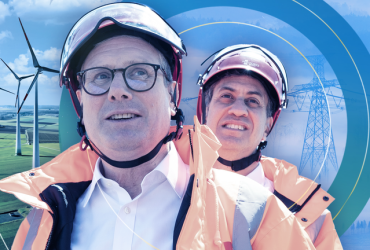Tweaking the routes of a small number of planes could reduce the warming effect of contrails by half and cost less than €4 per ticket, according to a study.
Contrails (or condensation trails) are the lines left in the sky when warm, moist exhaust fumes from an aircraft mix with the cold air to produce ice crystal clouds.
They can dissipate quickly if the air is dry.
However, in humid air they can spread out and linger, trapping heat from the Earth’s surface similar to regular cirrus clouds.
The study, by campaign group Transport Energy, says their warming effect is at least as important as the one caused by carbon dioxide emissions from burning aviation fuel.
However, it says just 3% of flights generate 80% of contrail warming, and tweaking flight paths for some of the journey could cut the effect by more than half by 2040.
Flights at higher latitudes are more likely to form warming contrails, according to the study, so those over North America, Europe and the North Atlantic are prime candidates to be altered.
Evening and night flights are also said to have the largest warming contribution.
The authors believe the “climate benefits from contrail avoidance would still be 15 to 40 times larger than the CO2 penalty” and would improve as technology advances.
They estimate that on a Paris to New York flight, it would cost under €4 (£3.30) per ticket to avoid contrails forming, or €1.20 (£1) for a Barcelona to Berlin route.
The price would pay for extra fuel, as well as technology such as humidity sensors.
Other research has sounded a similar warning over contrails.
A 2021 study – looking at the period between 2000 and 2018 – also reported they were more consequential for warming than aviation’s C02 emissions.
Contrails and their warming effect will be discussed on Wednesday at an event, co-hosted by a University of Cambridge institute, at the COP29 climate summit.









